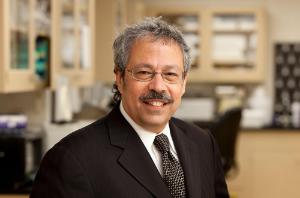Stem Cells Could Be the Key to Treating Severe Blistering Disease, RDEB
An estimated 25,000 people in the United States live with some form of RDEB, a rare but extremely painful genetic condition

Jennifer Riekert, M.B.A.
Vice President of Communications and Strategic Initiatives
New York Medical College
(914) 594-4552
jennifer_riekert@nymc.edu
Valhalla, N.Y. - A new study, led by two researchers from New York Medical College, Mitchell S. Cairo, M.D., professor of pediatrics, division of pediatric hematology, oncology and stem cell transplantation, and professor of medicine, pathology, microbiology and immunology, and cell biology and anatomy and vice chairman of the Department of Pediatrics at New York Medical College and Yanling Liao, Ph.D., clinical assistant professor of pediatrics, suggests that stem cells could be the key to treating symptoms of RDEB—the genetic condition characterized by extremely fragile skin.
An estimated 25,000 people in the United States live with some form of RDEB, a rare but extremely painful genetic condition. While the number of people affected by RDEB is relatively small, the disease has gained increasing attention because, to date, there is no known treatment for the disease which causes extremely painful symptoms including blisters and skin erosions from something as simple as rubbing or scratching. Nearly every patient with a severe generalized form of RDEB has “mitten” deformities of the hands and feet.
In the most severe cases, internal organs are affected and vision loss, disfigurement and other serious medical problems can occur. Patients with RDEB are also at high risk for developing cutaneous squamous cell carcinoma, an aggressive type of skin cancer.
Drs. Cairo and Liao led a team of investigators who studied the role of a protein called transforming growth factor beta (TGFβ) in RDEB. The TGFβ signaling pathway is involved in many cellular processes in embryos and adults, including cell growth, differentiation, apoptosis and more. As such, TGFβ1 plays an essential part in wound healing. However, recent studies have also demonstrated that TGFβ signaling is associated with fibrosis and malignancy in RDEB animal models (col7a1-/- mice) and humans.
The study, recently published in STEM CELLS, suggests unrestricted somatic stem cells (USSCs) derived from human cord blood can ease fibrosis and inflammation in a painful type of skin disorder called recessive dystrophic epidermolysis bullosa (RDEB). The stems cells also can potentially prevent malignant tumors, a frequent side effect of RDEB, from forming.
Along with investigating the dynamics of TGFβ signaling and RDEB, Drs. Cairo and Liao wanted to take the next step in their previous study, also published in STEM CELLS, in which they showed how an injection of USSCs significantly improved wound healing and extended the life of col7a1-/- mice. This time they wanted to learn what happened when the injections were given earlier and repeatedly.
They began by injecting one group of col7a1-/- mice with a dose of USSCs. A second group of col7a1-/- mice were administered a buffer (dextran/human serum albumin, or D/HSA). As a control, they did the same using wild type mice. The injections were administered to each animal starting at birth, and then once a week for a total of four weeks.
“We saw the activation of TGFβ signaling in the col7a1-/- mice as early as a week after birth, starting in the interdigital folds of the paws – similar to the ‘mitten’ effect you see in human patients. This was accompanied by increased deposits of collagen fibrils as well as elevated levels of MMP-9 and MMP-13, which are malignancy biomarkers,” Dr. Cairo said.
“But interestingly,” Dr. Liao added, “when we compared the group of col7a1-/- mice injected with USSCs to the col7a1-/- mice given the buffer, we found that the USSCs had suppressed TGFβ signaling and MMP-9 and MMP-13 expression, while upregulating TGFβ3 and decorin, which reduces fibrosis and scarring.”
New York Medical College
Founded in 1860, New York Medical College is one of the oldest and largest health sciences colleges in the country with nearly 1,500 students and 330 residents and clinical fellows, more than 2,600 faculty members and 23,200 living alumni. The College, which joined the Touro College and University System in 2011, is located in Westchester County, New York, and offers degrees from the School of Medicine, the Graduate School of Basic Medical Sciences, the School of Health Sciences and Practice, Touro College of Dental Medicine at New York Medical College and a school of nursing. NYMC provides a wide variety of clinical training opportunities for students, residents, and practitioners.
